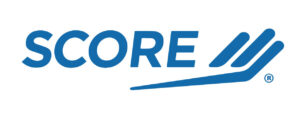Please log in!
Log In:
Sign Up:

We are grateful to our colleagues at the University of Georgia SBDC (Savannah) for sharing with us – and you! – an easy-to-use financial projections template. We also appreciate the work they did to make their template better match the format of The Beginner’s Guide to Financial Projections. This is a great place to start if you are trying to better understand how your projections would look in a template!
More about this Template
- Geared toward startup businesses – does not have a place to provide historical financials
- Represents a simple business model. A great place to start if you have a few simple revenue streams and/or if you are purchasing a franchise and have data to work with from your franchisor to assess feasibility
- Not designed with complex inventory capabilities
- Has a “Notes” tab with space for documenting assumptions to projections and an area for cost detail.
- Not designed for “ramp up” (like we saw with River) or seasonality (as we saw with Mateo’s food cart). However, this is something you can manually enter yourself based on what you include in your monthly inputs.
- Includes Sources and Uses on the Dashboard
- Note: This template does not include a balance sheet, which some lenders will not require. We recommend discussing expectations and requirements with lenders you are exploring working with early in the process.
Download the SCORE Projections Template
 SCORE is a 501(c)(3) nonprofit organization that provides free and confidential business mentoring services to prospective and established small business owners in the United States. SCORE’s website includes a wide variety of templates you may find valuable for your business planning process.
SCORE is a 501(c)(3) nonprofit organization that provides free and confidential business mentoring services to prospective and established small business owners in the United States. SCORE’s website includes a wide variety of templates you may find valuable for your business planning process.
More about this Template
- Geared toward startup businesses – does not have a place to provide historical financials
- Includes instructions explaining how to use the template, including color-coding
- Not designed with complex inventory capabilities
- Provides a place to include additional capital expenditures (large investments after your initial startup period). If you enter a purchase in this section, that information is represented in the cash flow information as well.
- Includes a space for a line of credit
- For businesses practicing accrual-based accounting, this template has a place to include information about aging Accounts Payable and Accounts Receivable
- Includes a simple COGS calculator for both product and service businesses, as well as a place to enter your COGS based on a particular revenue stream
- Includes tabs for ratio analysis and diagnostics
Finding Financial Projection Templates
Neither of these templates quite work for you? There is no one “gold standard” financial projection template, and the template you need may vary depending on the type and size of your business. Given that, here are a few places you can investigate to find a template that suits your needs:
- Part of an industry association? Your association may have a template that is industry-specific.
- Working with a local lender? Your bank may have a template, or they may require you to use a particular template. Always check with a potential lender before seeking funding to make sure you understand their expectations.
Evaluating Financial Projection Templates
Throughout this course, we’ve talked about the most common inputs you will need to create financial projections. Because different types of businesses will need different financial projection templates, you may need to ask around to find the best template for you. On this page, we have included two different templates that can help get you started, along with some additional information about each so that you can understand some of the differences between them.
By taking the concepts you have learned throughout this course, you can now use either of the templates shown – or one you’ve found on your own! – to develop projections for Years 1-3 of your business.

